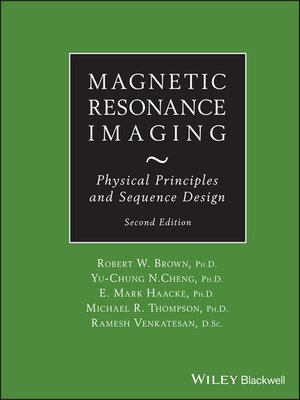
Sign up to save your library
With an OverDrive account, you can save your favorite libraries for at-a-glance information about availability. Find out more about OverDrive accounts.
Find this title in Libby, the library reading app by OverDrive.



Search for a digital library with this title
Title found at these libraries:
| Loading... |
Thoroughly revised, updated and expanded, the second edition of Magnetic Resonance Imaging: Physical Principles and Sequence Design remains the preeminent text in its field. Using consistent nomenclature and mathematical notations throughout all the chapters, this new edition carefully explains the physical principles of magnetic resonance imaging design and implementation. In addition, detailed figures and MR images enable readers to better grasp core concepts, methods, and applications.
Magnetic Resonance Imaging, Second Edition begins with an introduction to fundamental principles, with coverage of magnetization, relaxation, quantum mechanics, signal detection and acquisition, Fourier imaging, image reconstruction, contrast, signal, and noise. The second part of the text explores MRI methods and applications, including fast imaging, water-fat separation, steady state gradient echo imaging, echo planar imaging, diffusion-weighted imaging, and induced magnetism. Lastly, the text discusses important hardware issues and parallel imaging.
Readers familiar with the first edition will find much new material, including:
Three appendices at the end of the text offer review material for basic electromagnetism and statistics as well as a list of acquisition parameters for the images in the book.
Acclaimed by both students and instructors, the second edition of Magnetic Resonance Imaging offers the most comprehensive and approachable introduction to the physics and the applications of magnetic resonance imaging.






